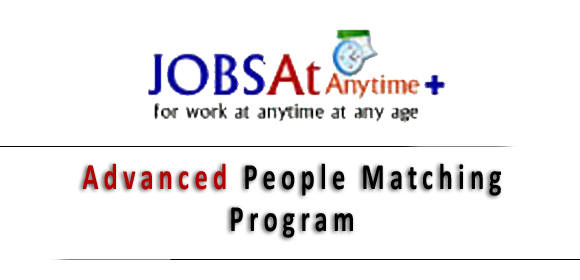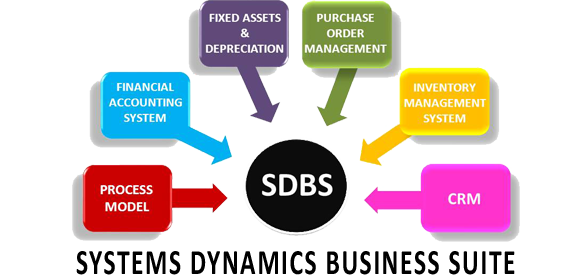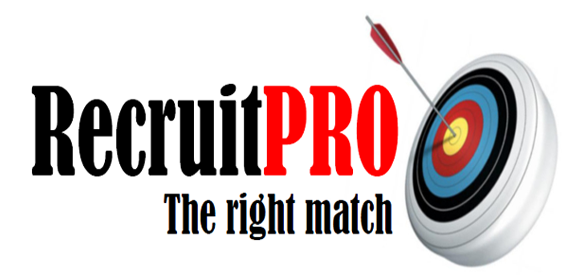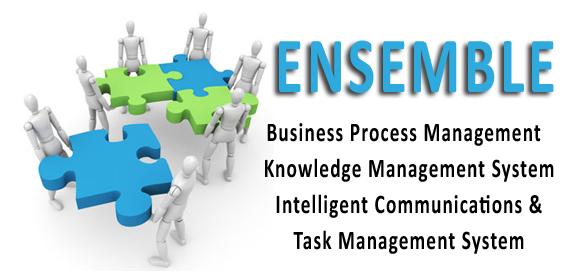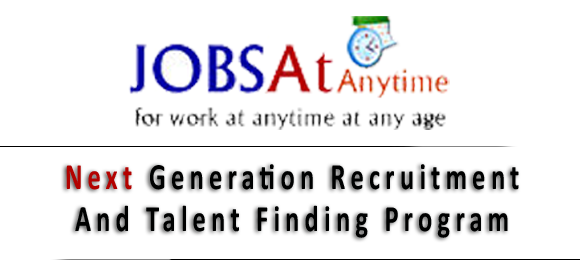- Tech Support Login
- Have an Enquiry?
Systems Dynamics Business Suite (SDBS) is a generalised and industry-agnostic enterprise level system. It covers almost all common operational level systems needed for running any business unit anywhere in the world. SDBS is architected for accommodating both formal and informal process which co-exist in most SMEs. It supports multiple companies, multiple currencies and multiple time zones – so it can be used by even a large enterprise or a group having diversified multi-location businesses.
SDBS includes many reports that support planning and control functions of the management. It exceeds most common ERP functionalities as it also includes handling of unstructured data – knowledge management, business process modeling and intelligent communications – which refer to business objects. The current version can be implemented in the English-speaking world only. SDBS modules could be implemented independently.
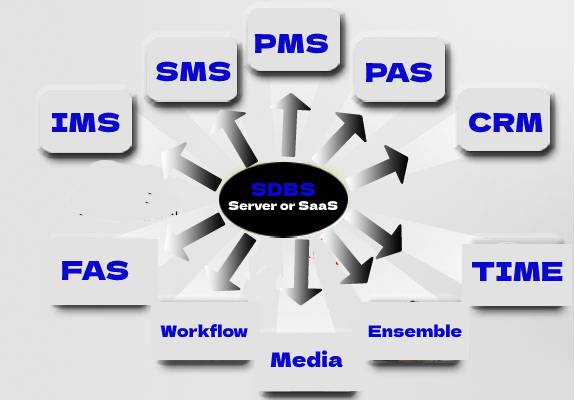
SDBS is highly configurable, secure and scalable system. Its flexible licensing policy coupled with user based or data volume based licenses for both Server and SaaS options is especially suitable for SME (Small and Medium size Enterprises).
SDBS has been tested at multiple sites – starting with 5-users, licensees have increased the number of users to over 50; the system can scale up to hundreds of users (and even more) – as horizontal scaling is supported by the Microsoft technology stack which is used in SDBS.
SDBS provides a fine grained security policy that controls access to data and master files for employees, consultants, auditors, customers and suppliers.
The constituent modules comprising SDBS are briefly described below.
Organisation Process Model
This module manages all common information about the user’s organisation like management constitution, year established, group companies, units, addresses, banks associations, departments etc. This set of information is shared with other modules, therefore, it is a prerequisite to all modules.
Financial Accounting (FAS)
FAS supports “n” level of business units in a hierarchy. The facility of rolling up the financial data to any level in the hierarchy is available in real-time. The chart of accounts can also be “n” levels deep. Account description templates can be defined for each account – this ensures the standardisation of descriptions and easy retrieval of information. Supporting documents may be attached to transactions. Auditors module is in-built. Life cycle tracking of audit queries is supported. Inventory, Sales, Purchase and Payroll systems are integrated so the transactions of these modules result in real-time updates of financial position. More, click here
Payroll Accounting System (PACS)
This module can take care of regular staff on payroll as well as daily wagers. Flexibility in setting-up allowances and deductions by user defined categories and even labels for each item makes the program suitable and generalised enough for most organisations. However, for tax conformance and statutory allowances which vary from country to country, customisation may be needed. The program currently complies with Indian rules and regulations. More, click here
Sales Management System (SMS)
This module handles processes and related transactions of enquiry, quotation, customer order booking, scheduling of orders for production, deliveries, invoicing and debit/credit notes apart from sales returns and so on. SMS supports multi-level pricing for items, regions and even customer specific or contract specific pricing. SMS includes Customer Dashboard where from all relevant data can be viewed at a glance and user can drill down into details. Module interacts with Financial Accounting System and Inventory Management System. It can be used by manufacturers and traders. More, click here
Purchase Management System (PMS)
The module handles processes and transactions of sending supplier enquiry, receiving quotations, quotation analysis,, purchase order placement, goods receipt, supplier bill receipt and three-way reconciliation of purchase order-goods receipts and purchase orders. Module interacts with Financial Accounting System and Inventory Management System. It can be used by manufacturers and traders. More, click here
Fixed Assets & Depreciation Management (FAD)
The FAD is a companion module of FAS. It helps to keep track of all Fixed Assets and does calculations of depreciation and helps create corresponding transactions entries. Transaction entries also result from valuations on a given date of any asset. The calculation of depreciation by two methods is provided – straight line method and sinking fund method. The program has interface with Financial Accounting System. More, click here
Inventory Management System (IMS)
IMS does stock accounting and many other functions: production monitoring, reporting of consumption and price variances, quality monitoring, material requirement planning, planned maintenance, tools and equipments usage, standard process or BOM maintenance and so on. IMS provides MRP-1 functionality. IMS supports inventory vlauation by different methods; it can track stocks by item name, batch number and also serial number. It enable transactions of consumption, production to/from conversion centres and storage centres under specified business rules. For a given plan of production, it can compute requirements of inputs at each conversion centre through successive stages of manufacture /processing using the bill of material or standard recipe data for each assembly/process at each “conversion or production centre”. More, click here
Security Management
The system supports multiple administrators who in turn can manage unlimited number of users. The users can be assigned rights over tasks with or without qualifications. SDBS allows user identity based credentials for those who are allowed to work from any computer or mac id bound security for those allowed to work from only specific computers. More, click here.
Media Operations
This program intends to help in preparation of release orders to be issued to advertising agents. It can keep track of orders details and help the user in bill passing by comparing the release orders with the evidence of execution, for e.g. newspaper ad, or telecast certificate of spots of users’ ads with specific names. More, click here.
Time Management for Employees (TIME)
The purpose of this program is to primarily help staff to log one’s time on a daily basis and report any impediments that may affect their work or targeted milestones. Additionally, the program helps to plan and manage time in assignments to employees (or any resource person). Time spent on tasks point to processes in the process model. Staff required to work in client engagements can mark billable time. The program can also generate information for billing with details of projects and tasks. More, click here.
Business Model & Work Flow
The “Ensemble” module allows Business Process Modeling and intelligent communications. Workflow (under development) is intended to be coupled with BPM. In the process model, employees can be assigned ownership of each process. The module can handle multiple repositories – of unstructured data. The Knowledge Management System contains resources which can be shared with a fine grained security. The program allows quick induction of new staff and helps to align views of staff so that collaborative working improves. More, click here.
Business Intelligence & Mobile apps
These modules, under development will empower CEO and field staff.
MCRS
The Management Control Reporting System integrates the results from all other modules and produces summarised reports for the management. The profits earned vs planned profits – variances are analysed and linked to functional responsibilities – sales, production or purchase functions are held accountable for the impact on profits due to variances in the controllable factors. For e.g. consumption variance – with respect to standard processes (or BOM) are the responsibility of the production function; price variances of items the responsibility of the purchase function, sales variances (product wise, region wise) the responsibility of the sales function.
